Over the past year and a half, cultural organisations have deployed efforts and resourcefulness to keep their audiences intellectually and emotionally stimulated. Believe it or not, I’m easily bored and, although I’m truly grateful for anything cultural that came my way during lockdowns, I didn’t enjoy the virtual tours of exhibitions, struggled to focus during Instagram live portfolio presentations and often felt that screens were the last thing I wanted to stare at.
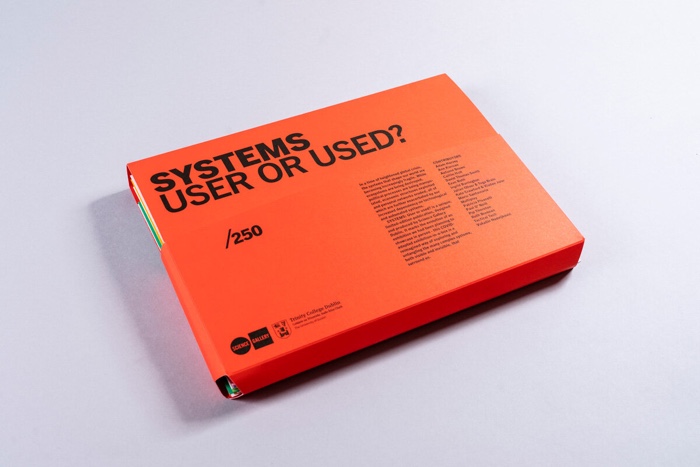
Last month, however, the postman brought me an exhibition-in-a-box. Called SYSTEMS, the limited-edition publication is Science Gallery Dublin‘s attempt to share on paper and “from the comfort of your own home” an exhibition that had been scheduled to take place inside the gallery. With a live public.
The exhibition features artists, thinkers and researchers whose works unravel the many complex technological, social and ecological systems, both visible and invisible, that surround us:
In a time of heightened global crisis, the systems that shape our world are becoming increasingly fragile. While ecosystems are being destroyed, political processes are being manipulated, economic structures exploited and personal networks eroded, all of which are further exacerbated by our increased dependency on technological and automated systems.
Yet how much do we really know of these systems? How are they all connected, and what are the infrastructures and networks upon which they are built? How do we find out? How can we navigate, probe, critique and challenge them?
SYSTEMS reimagines what an exhibition can be in times of distance, condensing artworks and discussions about the infrastructures that keep our world (dys)functioning into essays, zines, posters, postcards, leaflets and interviews.
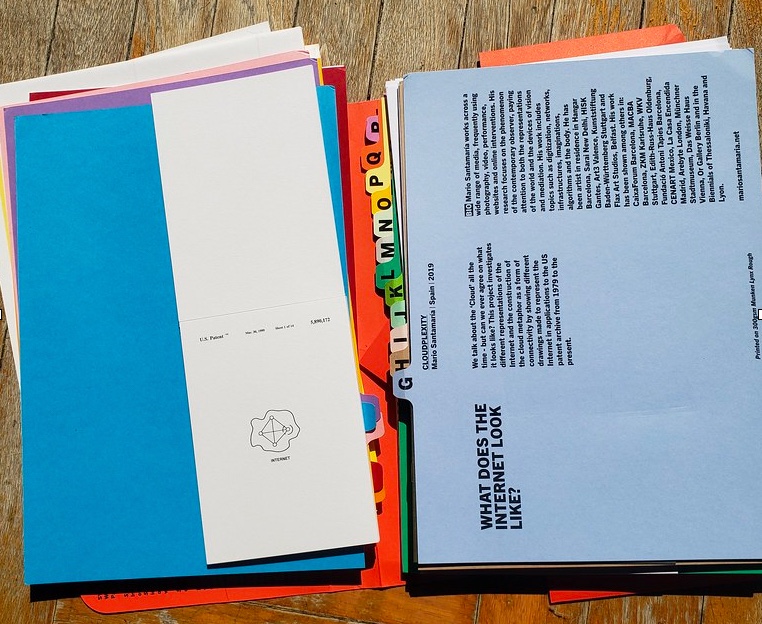
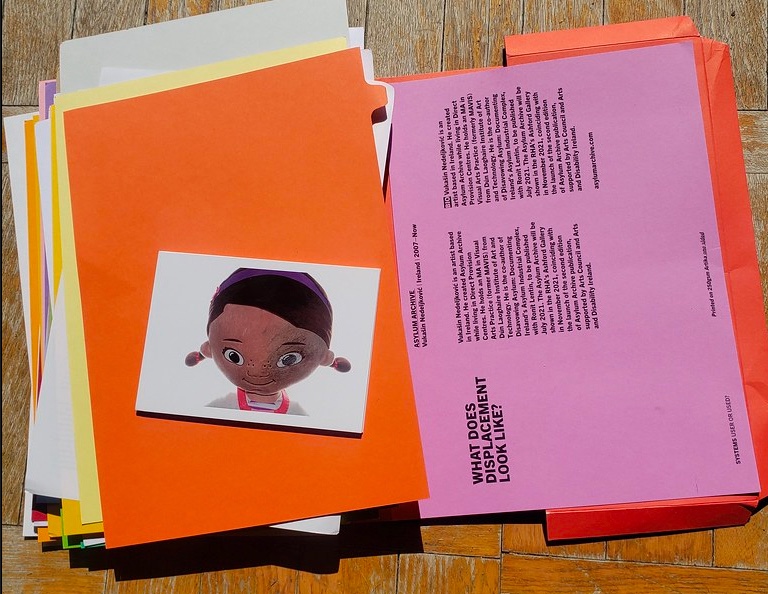
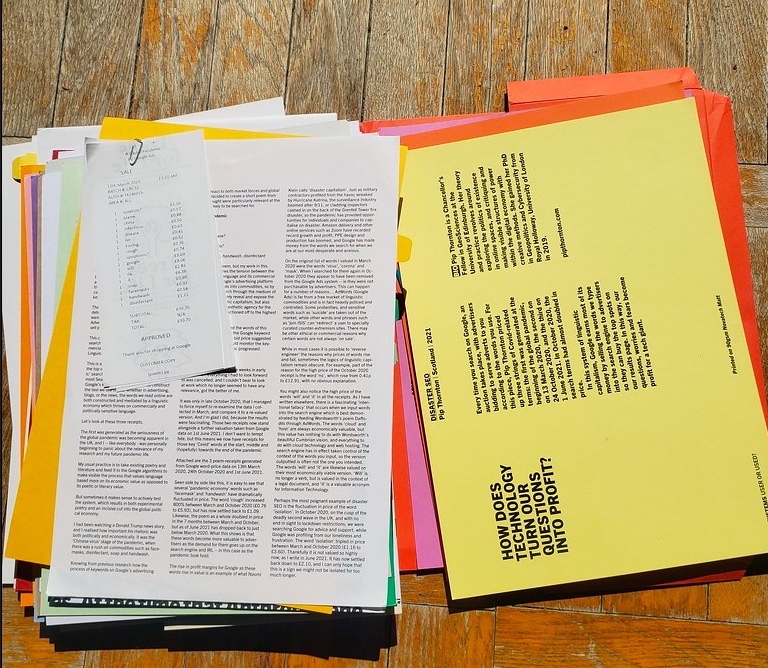
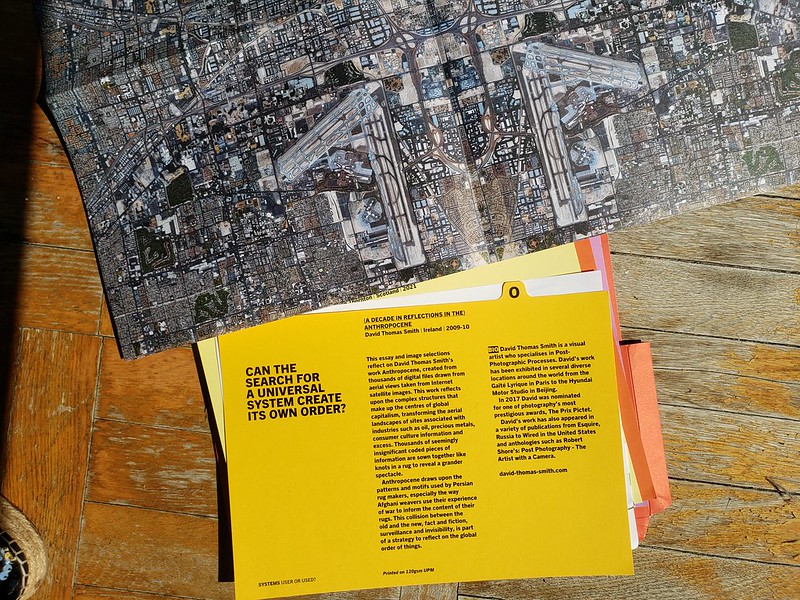
The design of the publication is brilliant. Inside the massive red folder are coloured cardboard pages that mimic exhibition labels with a bio of the artist or researcher and a brief presentation of their contribution to the show. The works themselves brought me a lot of joy. It wasn’t just the content that I found riveting, it’s the way some of the pieces found a new life on paper. That and the feeling that the designers and curators had a lot of fun crafting the publication. SYSTEMS contains classics such as Anatomy of an AI System by Kate Crawford and Vladan Joler; Evan Roth‘s Red Lines, this time in the form of strips of images the artist saved for personal use as part of his research process; Mario Santamaria‘s Cloudplexity series (Internet representations extracted from the U.S. Patent database) was turned into a deck of postcards, etc.
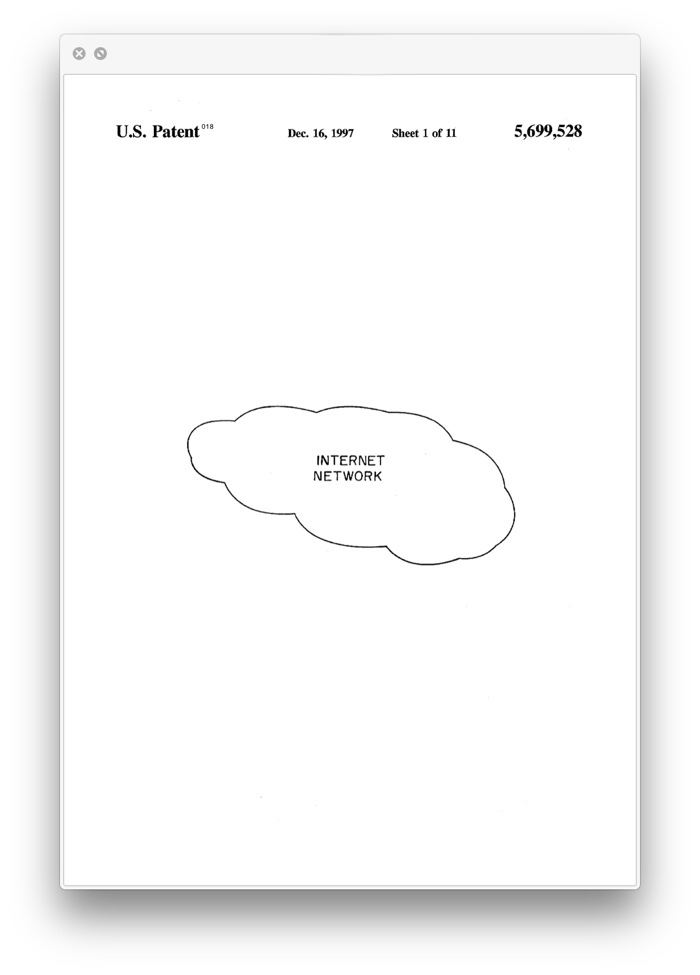
Mario Santamaria, Cloudplexity
I tried very hard to find a boring essay in the publication but there simply wasn’t any. Here’s a couple of gems i particularly enjoyed:
Paul O’Neill, an artist and researcher whose work explores the hidden infrastructure that enabled Dublin to become global technology hub, took its cue from David Graeber’s essay Dead Zones of the Imagination to interview Ingrid Burrington. They discussed artistic interventions outside the systems, the extraordinarily boring manifestations of power and the possibility of making one day a decolonised computer!
Historian Ciaran O’Neill investigates the history of Dublin’s Silicon Docklands and its transformation from sandy marshland inhabited by shellfish to today’s headquarters of future-oriented tech companies.
Sarah Grant, the founder of Radical Networks, calls for communities’ right to positions themselves not only as users but also as creators of communication infrastructures and technologies.
Tactical Tech offers in print their tips about making phones more secure, detecting misformation, bursting your filter bubble, seeing yourself through the eyes of google, avoiding oversharing on social media and more in their Data Detox for Youth. A useful guide for not so young people too by the way.

Joana Moll, Ultimate Solvers, 2020
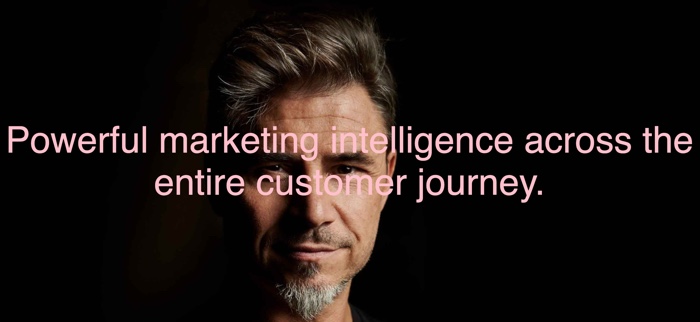
Joana Moll, Ultimate Solvers, 2020
Joana Moll‘s essay looks at the kind of world view our everyday devices carry and, more generally, examines the perils of trying to solve highly complex systemic problems, be they ecological or related to the ongoing pandemic, with reductionist techno-solutions. The text explores the reasoning behind Ultimate Solvers, a web-based artwork that holds a critical mirror to the aesthetics and grand promises of the tech industry. It subtly shows their slogan for what they are: an inflated, empty rhetoric based on an unrealistic premise.
In Asunder: In conversation, artists Tega Brain and Julian Oliver discuss with Dr Ruth Brennan from the Trinity Centre for Environmental Humanities. They too question techno fixes and in particular the impossibility for climate scientists to create the perfect simulation of the environment based on data. No matter how massive the dataset is, it will never fully reflect the complexity and interdependence of ecosystems.
In a similar vein, Adam Harvey‘s text asks whether we can change the world by changing how computers see the world. Several of the points he makes eschew the usual platitudes. For example, he mentions an essay that points out that solving representational problems in image training datasets by including more data from a marginalised population is not necessarily a move in the right direction because fairness cannot be achieved by the sole logic of accumulation.
To illustrate her research about Google Ads’ linguistic capitalism, Pip Thornton priced up 3 strings of covid-related terms (such as infectious, cough, symptoms and facemasks). The first was generated at the onset of the pandemic, the second in October 2020 and the third on 1 June 2021. In October 2020, the cost of the terms in Google’s search engine had almost doubled in price, showing how the search engine profits from our anxieties.
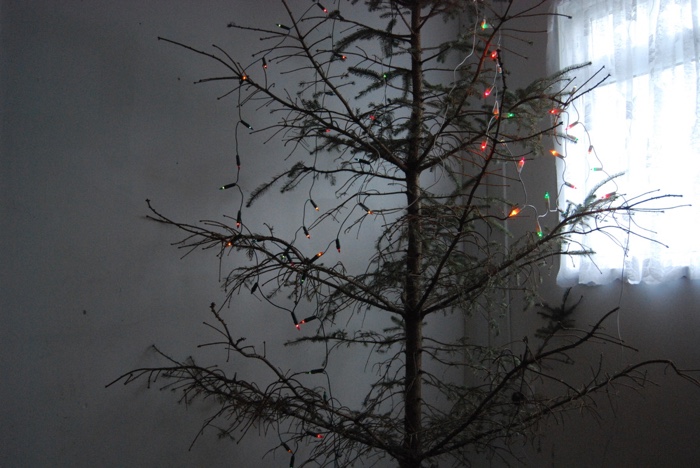
Vukasin Nedeljovic, The Old Convent, Ballyhaunis, 2007-2009
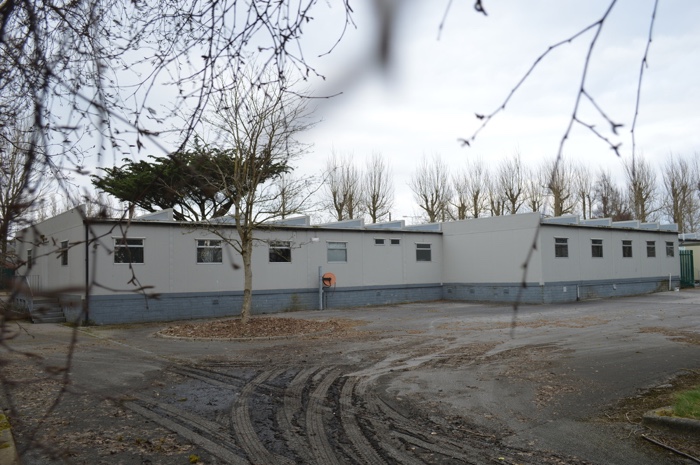
Vukasin Nedeljovic, Ballymullen Barracks, Tralee, 2013
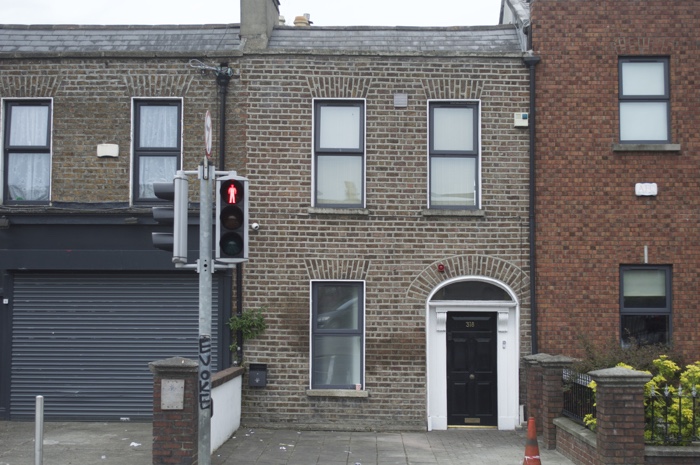
Vukasin Nedeljovic, 318 North Circular Road, Dublin, 2016
When Vukasin Nedeljovic arrived in the Republic of Ireland in 2006, he was sent to a Direct Provision centre. The place was part of a system of asylum seeker accommodation often criticised by human rights organisations for being inhuman and degrading.
Using a small camera he’d brought from his hometown of Belgrade, he captured his surroundings at the Old Convent in Ballyhaunis, Co Mayo. He spent 3 years there before receiving his papers in 2009. What started as a coping mechanism became a project to document every Direct Provision centre in the Republic of Ireland.
Nedeljovic’s vast Asylum Archive shows mostly the outside of the centres but also -sometimes with the help of residents- the interiors of Ireland’s asylum system as well as traces that bear witness of the daily life and regime of surveillance that characterise these spaces of confinement: toys, abandoned objects, signing in papers and CCTV cameras.
The Science Gallery publication includes some of Nedeljovic’s photos in postcard format. Which makes them perfect for distribution and raising awareness among Irish citizens. Most of these centres look so mundane that they invisibilise the human rights issues associated with them. Nothing like a postcard to say “Hi! You might not see me but I’m there!”
I’ll end here this enthusiastic review of SYSTEMS. I could go on and on about how imho this was the most exciting pandemic experiment from the art world this year but the publication sold out very quickly, alas!
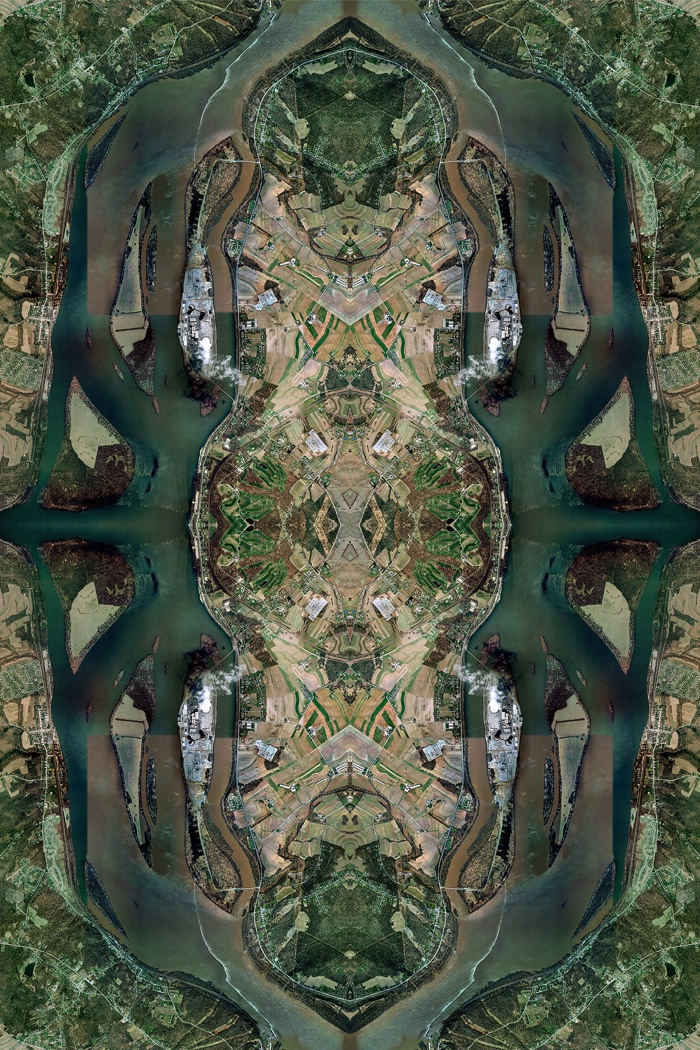
David Thomas Smith, Three Mile Island Generating Station, Middletown, PA, United States of America, 2010-11. From the series A Decade Of Reflections In The Anthropocene
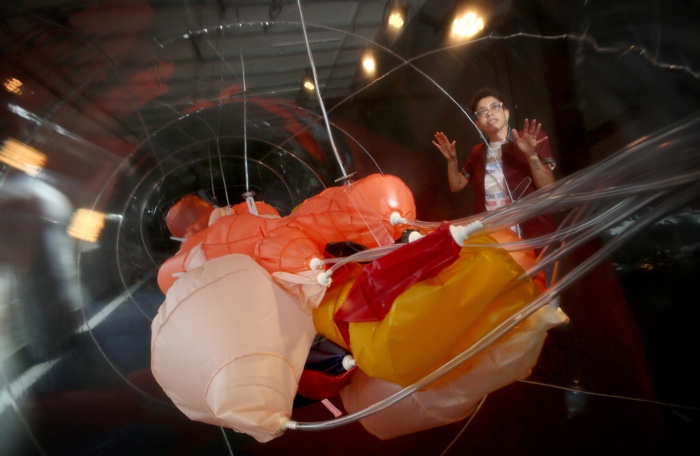
Multiplay, A.I.R., 2021. Picture by Mark Stedman during the Science Gallery at Trinity College Dublin’s IN THESE STRANGE TIMES programme
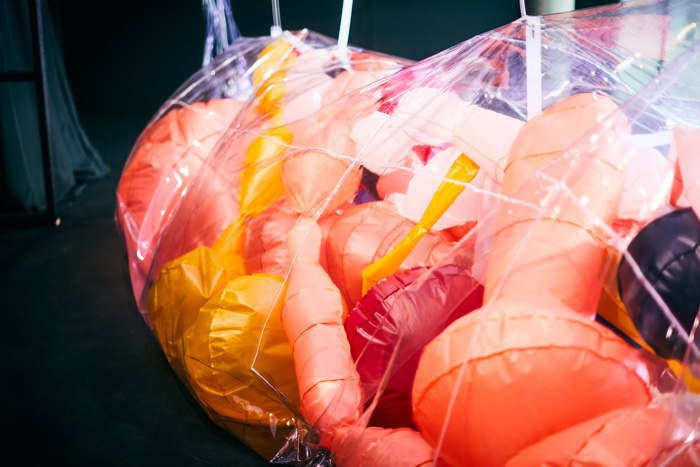
Multiplay, A.I.R., 2021. Picture by Mark Stedman during the Science Gallery at Trinity College Dublin’s IN THESE STRANGE TIMES programme
Previously: Linguistic capitalism. Has Google become an all powerful usurer of language?, A guided tour of Dublin’s physical Internet infrastructure, Covid-19 might not follow us online but our carbon footprint does, Critical investigation into the politics of the interface. An interview with Joana Moll, Taking data packets for a ride. An interview with Mario Santamaria, Exploitation Forensics. Interview with Vladan Joler, Critical Exploits. Interrogating Infrastructure, Asunder. Could AI save the environment?, Exploitation Forensics. Interview with Vladan Joler, etc.
